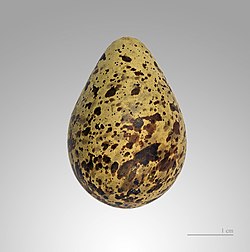| Curlew sandpiper | |
|---|---|
 | |
| Breeding plumage | |
 | |
| Non-breeding plumage | |
| Scientific classification | |
| Kingdom: | Animalia |
| Phylum: | Chordata |
| Class: | Aves |
| Order: | Charadriiformes |
| Family: | Scolopacidae |
| Genus: | Calidris |
| Species: | C. ferruginea |
| Binomial name | |
| Calidris ferruginea (Pontoppidan, 1763) | |
 | |
| Range Nonbreeding Breeding Migration | |
| Synonyms | |
Erolia ferruginea Vieillot , 1816 | |
The curlew sandpiper (Calidris ferruginea) is a small wader that breeds on the tundra of Arctic Siberia.
Contents
- Taxonomy
- Description
- Distribution and habitat
- Behaviour
- Breeding
- Food and feeding
- Status
- References
- Sources
- External links
It is strongly migratory, wintering mainly in Africa, but also in south and southeast Asia and in Australia and New Zealand. [2] It is a vagrant to North America.

